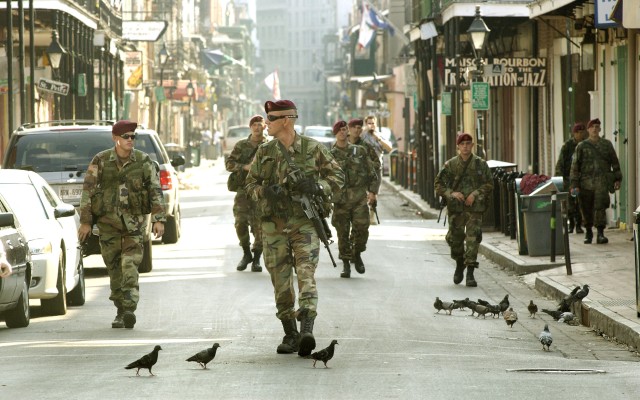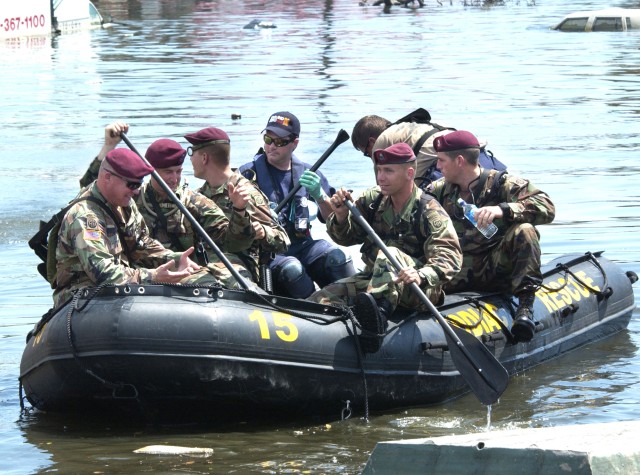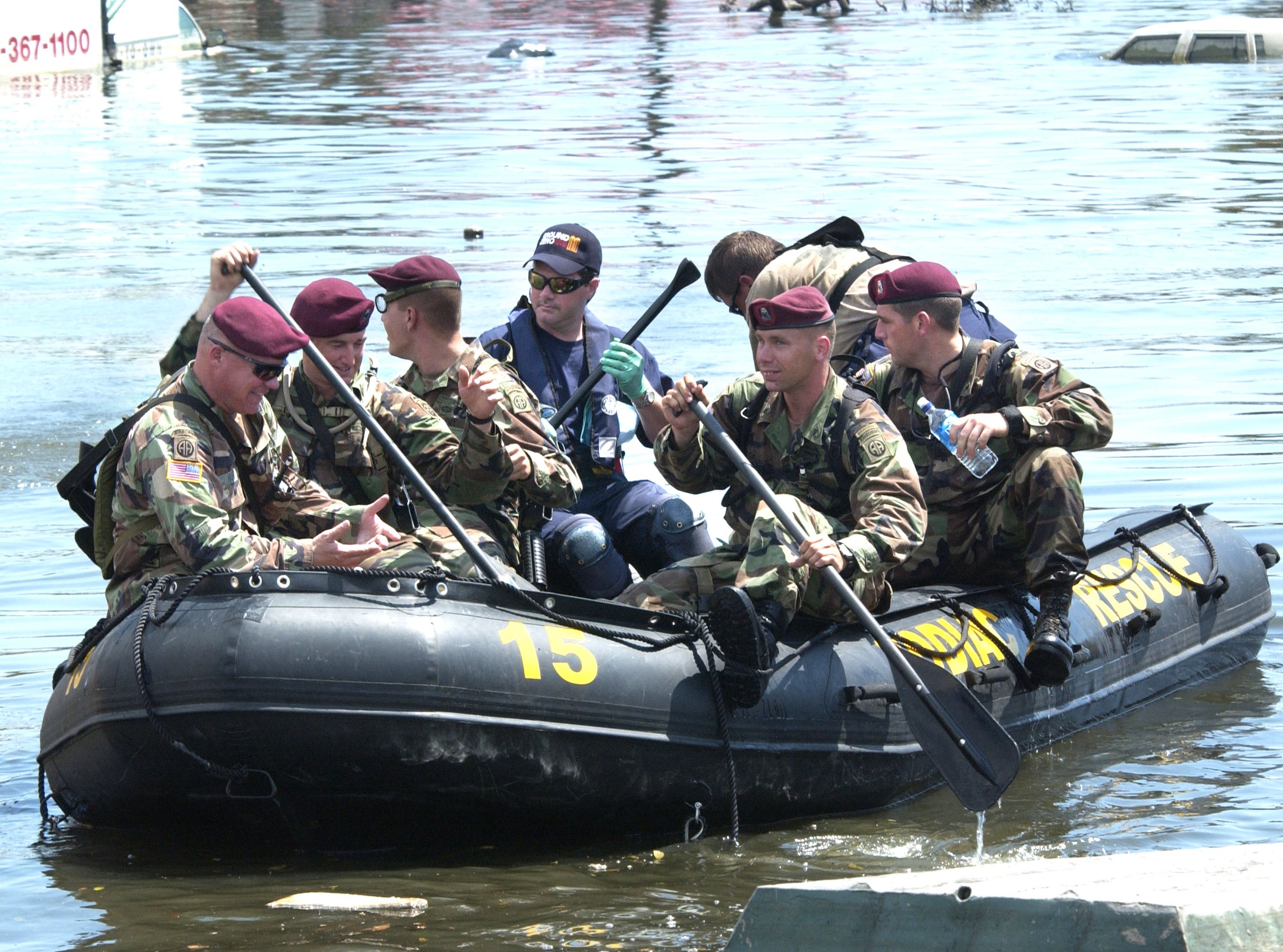As Hurricane Katrina approached landfall, there was a palpable, collective sigh of relief across the Gulf Coast. Not only was the catastrophic Category 5 storm weakening as it approached land, but it would make landfall east of vulnerable New Orleans. The Mississippi Gulf Coast would, as it had numerous times in the past, bear the brunt of the destructive northeast quadrant of Katrina. But unlike past hurricanes in the region, it would not be wind that would wreak havoc but a 10-28 foot storm surge that would reach as far as 12 miles inland and virtually destroy cities like Gulfport and Pascagoula, Mississippi. The surge along the Louisiana coast would push water from the Gulf of Mexico into Lake Ponchartrain and exert enough pressure along the Industrial Canal levees to cause them to fail in three places and inundate New Orleans and surrounding parishes.
By the time Katrina made landfall on August 29, 2005, America's military was mobilizing for emergency response. Almost 10,000 National Guard troops were on the ground in Louisiana and Mississippi. The commander of the First Army, LTG Russel Honore, who had experience with flood and hurricane relief, realized that the storm would make landfall along the border of two states, each falling under the area of responsibly of different chains of command of both the Army and the Federal Emergency Management Agency (FEMA). Concerned that command and control would become an issue, he requested that the Northern Command (NORTHCOM) establish a joint area of responsibility. NORTHCOM activated its battle staff when the hurricane made landfall and selected LTG Honore to head Joint Task Force Katrina with First Army in the lead and Fifth Army in support.
National Guard troops immediately started relief operations along the Mississippi and Louisiana Gulf Coast after Katrina made landfall. Once the levees failed in New Orleans, active duty troops were mobilized to assist the rescue efforts in New Orleans. They used their experience in Iraq and other operations to bring order to a confused situation. The 67th Signal Battalion was deployed from Fort Gordon to set up communications for the Task Force Forward Command Post. Units from the 82nd Airborne Division began arriving at the New Orleans Airport seven hours after getting deployment orders. MG William Caldwell of the 82nd Airborne received succinct orders from LTG Honore: "Your job is to fix the airport and fix New Orleans." The 319th Airborne Field Artillery was assigned to fix the airport. Working with airport staff, the 319th augmented the existing departure process and brought order and direction by taking responsibility for passenger manifests and security screening. Within 12 hours, 9,000 people had been evacuated through the airport. The 3rd Brigade of the 82nd Airborne worked with FEMA in search and rescue operations, providing needed manpower, equipment and standardized maps. The 56th Signal Battalion was tasked to connect commercial communications to the military communications network. The 14th Combat Support Hospital set up in downtown New Orleans to treat the injured. The 21st Chemical Company decontaminated 400 personnel, 783 vehicles, and 73 boats, and helped decontaminate both Charity and Touro hospitals. When FEMA requested that DOD take over logistics, the 13th Corps Support Command deployed from Fort Hood. Soldiers from the 82nd Airborne evacuated the Super Dome and the Convention Center, where thousands of citizens had fled for refuge when they were flooded out of their houses. The paratroopers also joined National Guard units patrolling the streets to keep order in the city.
The Army Corps of Engineers (COE) began their own operations with a three-pronged attack: drain New Orleans, mobilize military and contracting resources to close the levee breaches, and repair the pumps that keep New Orleans dry. The Engineers also helped deliver food and water. By September 2, they had delivered 1.9 million MREs, 6.7 million liters of water and 1.7 million pounds of ice. As the Title 10 troops began to draw down, the Engineers began to gear up operations: by September 15, de-water operations were 60% complete. By the end of the month, COE contractors had removed 4.3 million cubic yards of debris in Louisiana and Mississippi, carted off 120 million tons of trash, and disposed of 36 million pounds of rotting meat. By October 11, New Orleans was dry.
Katrina was a large storm and cut a wide swath of destruction along the Gulf Coast. When emergency services and communications systems across the region failed, only the military had the experience to get on the ground quickly and begin working to restore communications, direct rescue and recovery operations, and maintain order. America's military has responded to most major American disasters since the Great Chicago Fire of 1871. As the response to Katrina illustrates, even while fighting two wars, America's Army stands ready and able to assist Americans in times of catastrophe.










Social Sharing